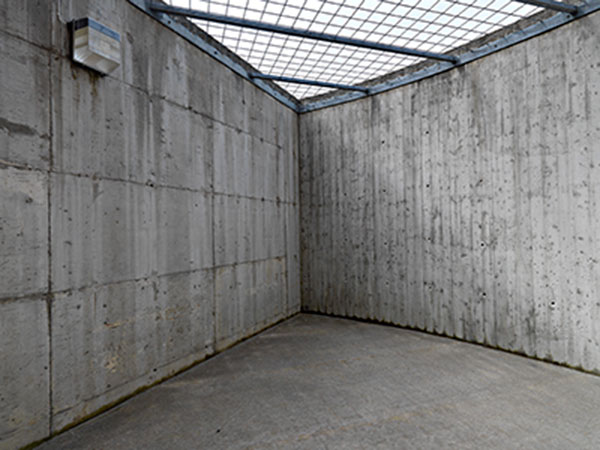
‘With this project, I was fascinated by the prison institutions in Norway. In my view Norwegians in general have the idea that prisons are very human institutions. I wanted to find out how much truth there was in this assumption. I wanted to investigate how different prisons were designed, and how the surroundings for restricted life looked like. Having the opportunity to come inside different prisons, I wanted to explore the architecture of these restrictions of free life,’ so tells me photographer Fin Serck-Hanssen in a recent correspondence. Back in 2008, when the Norwegian Ministry of Justice and Public Security was working on publishing a white paper, Serck was invited to document, the efforts of which resulted in an exhibition and the publication Normalizing Judgment. With open access to the prisons and the ability to work as long as privacy wasn’t safeguarded nor security put at risk, Serck was able to work with these semi-open parameters and meet with subjects as individuals as well as groups.


Having a look at Serck-Hanssen’s other published projects such as Vacuum, Scar or Gaywatch, not only highlighted a process of encounter with his subjects but methods for social exploration as well. ‘The subjects are usually themes that I am interested in or would like to explore or express. There are subjects from my everyday life, like the gay-scene and HIV-preventive work, but some of my series have emerged from more emotional and impulsive inputs. I also sometimes get invitation to do projects. The Scar series, I guess, was inspired by my own childhood that involved several serious surgeries, but also by the vulnerability of the human body, and the fascination for the scarring after the penetration of the human skin. I approached a hospital in Western Norway where I was living at the time and got permission to photograph some of the patients’ scars. In the Gaywatch series I asked friends or people I had seen in the Oslo gay-scene and asked if I could photograph them in their home. This was an important scene for developing my identity as a young man. The Vacuum series was shot in China. I was invited by a gallery and I decided to do some new work when I was there. I found the models among the curator’s friends and also on the streets. I don’t speak Chinese, so I communicated through a translator.’


With a variety of projects, there are themes which remain consistent throughout Serck-Hanssen’s work and one could notice the look at stigmatized groups as well as an approach which is increasingly political. Born and raised in Norway, Serck-Hanssen related how traces of an upbringing in a society with strong notions of equality, however two-sided, came to be relevant in his work. Whether it may be a reaction against such conformity in an ‘equal society’ or an affinity towards groups and individuals who differ from the norm. ‘I have a preference for bodily motives, and with the subject of the human body I explore questions like death, sexuality, vulnerability and disease. Another theme consistent throughout my work is a focus on stigmatized groups in Western societies. I’m looking for resources and positive energy in both the people and social systems these groups consist of. The gay-series is an example of this; the same are my early pictures of punk rockers. A third theme consistent is a tendency I have had in my later works where I am more political in my focus on marginalized groups in society. An example of this is my photographs of Norwegian prisons and inmates. In retrospect, I can already see that my early photographs of underground musicians, the photo-series about persons with HIV/Aids and other projects have strong political under-texts although this might not always have been intended at the time.’

Photographs from Normalizing Judgement courtesy of Fin Serck Hanssen. A larger sampling of Hanssen’s work is viewable here.
